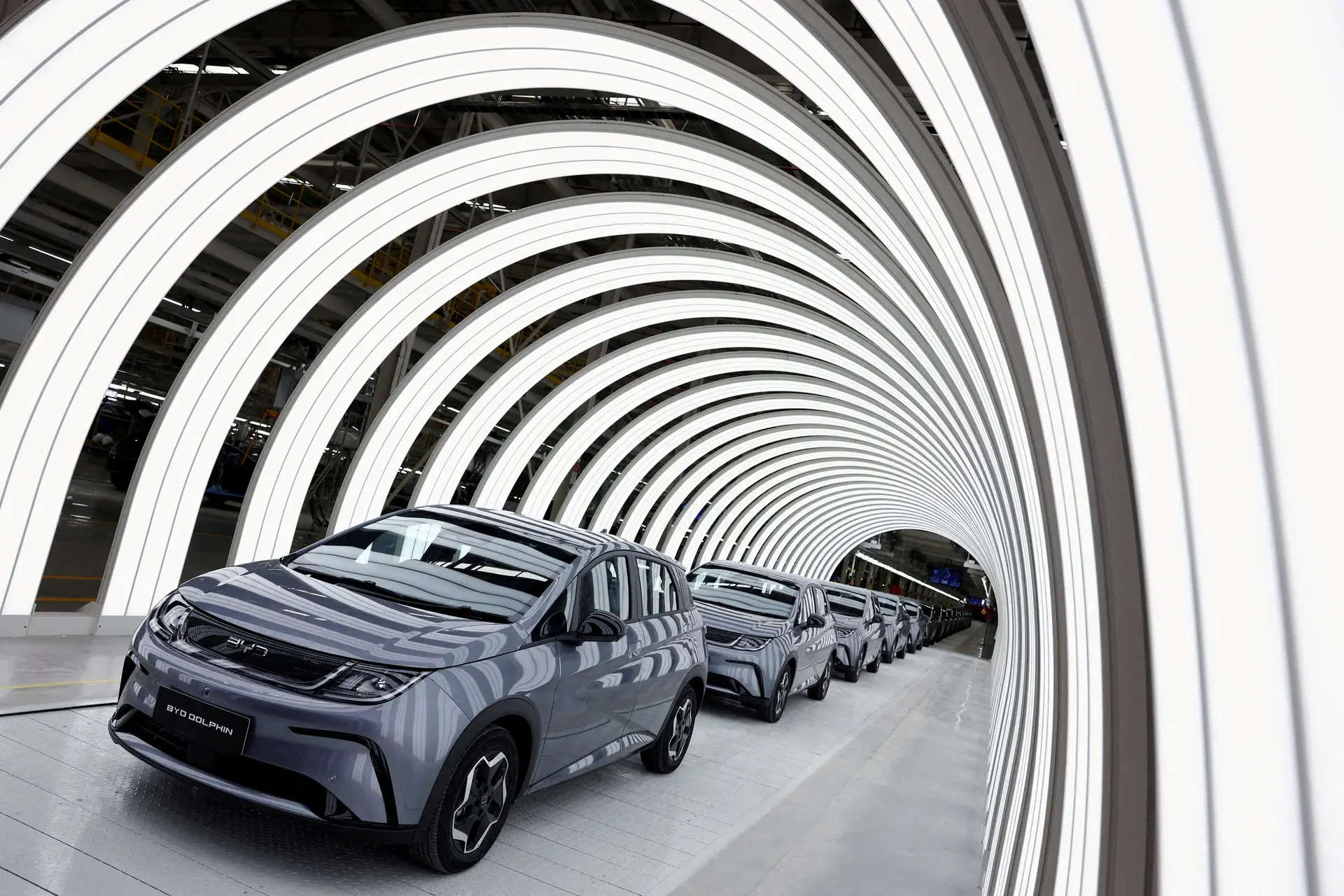
China began promoting electric vehicles (EVs) in 2009 initiating a program called Ten Cities, Thousand Vehicles. This was a pilot program that aimed at promoting EVs in public transportation in ten cities of China. The program was later expanded to 25 cities. This laid the foundation for large-scale push toward EV adoption in China.
Pursuing this program, China launched a series of comprehensive policies, subsidies, and incentives that was known as the New Energy Vehicle (NEV) policy, 2010. This policy provided financial subsidies not only to manufacturers but also to the consumers. China expanded its EV initiatives over the years and made this policy a core part of her industrial strategy.
China’s efforts to promote EVs were very well coordinated at all levels – national, provincial, and city/local levels. This coordinated and focussed approach has created a strong ecosystem for electric vehicles. The strategic infrastructure investments and regulatory support at all levels has made China the global leader in the EV market.
The government’s multi-tiered approach and consistent industrial policy are the pillars on which China’s current dominant position in the global EV market rests. Further, China made huge investments in lithium-rich countries known as the “Lithium Triangle” (Argentina, Chile, and Bolivia) that allowed it to vertically integrate the supply chain for lithium-ion batteries.
Though India was ahead in EV development – her first EV coming on roads during the 2nd Atal Bihari Vajpayee Government (1998-99) when the development of Vikram EV was acknowledged as the first of the 100 days of achievement by the government – it lost the lead because of a lack of government policy in this regard. At that time, some automobile companies were tinkering with EV in their R&D lab devoid of any commercial thinking.
It was a public sector unit – Scooters India Limited – that gave its alpha version of EV to Indian Institute of Management, Lucknow and Indian Institute of Technology, Kanpur to try it out within their campus and provide feedback. The feedback was encouraging and based on the feedback, the required improvements were made and a few electric vehicles were put in the local Lucknow market to run as shared taxis.
Even Delhi’s “Phutphut” (Motorcycle rickshaw) running between Connaught Place and Red Fort were replaced by Vikram EV during Sheela Dixit government. The concept of EV caught fancy later during the visit of President Clinton with his daughter Chelsea in 2002 when they visited Taj Mahal in Agra where ICE powered vehicles are not allowed.
The zeal, however, did not last long; it departed with the departure of President Bill Clinton as the owners of EV started complaining about battery and charging facilities.
The initial effort to promote electric vehicles (EVs) was to reduce air pollution and greenhouse gas emission. The inherent benefit was also the reduction of dependence on fossil fuels thereby making savings in import bills. Later, in 2013, the Government of India introduced a comprehensive policy framework known as the National Electric Mobility Mission Plan 2020 to promote the adoption of EVs, establish charging infrastructure, and create an ecosystem for the EV industry. The mission served as a foundational policy framework for promoting electric and hybrid vehicles in India. This was a good attempt to promote sustainable and eco-friendly transportation.
The main objectives of the mission were to achieve national fuel security by encouraging the transition from conventional to electric vehicles, target 6–7 million EV sales by 2020 and enable the development of EV manufacturing hubs and research centres in India. To achieve this, the key focus was on providing financial incentives for EV manufacturers and buyers, investment in EV R&D and the development of infrastructure, which mainly included establishment of charging stations.
In furtherance of the mission, Faster Adoption and Manufacturing of Electric Vehicles (FAME) Scheme was rolled out in two phases to accelerate EV adoption and promote local manufacturing. The first phase (2015–2019) provided financial incentives for the purchase of EVs and to set up charging infrastructure.
A budget allocation of ₹895 crores (around $110 million) was provided to subsidize electric two-wheelers, three-wheelers, four-wheelers, and buses while giving special focus on public transport and commercial applications. However, only 2.8 lakh electric and hybrid vehicles benefited from the subsidies provided.
At the expiry of FAME-I, FAME-II (2019–2024) was launched with an objective to further boost EV adoption, the focus being on the public transport, commercial vehicle sectors, and charging infrastructure with a budget allocation of Rs10,000 crores (around $1.2 billion). The key Provisions of FAME II were subsidies for 1 million electric two-wheelers, 500,000 electric three-wheelers, 55,000 electric four-wheelers, and 7,000 electric buses.
The scheme had a focus on charging infrastructure development (2,700 charging stations across India), particularly in urban centres and along highways while putting an emphasis on promoting domestic manufacturing through subsidies on locally manufactured batteries and EV components.
Further, two schemes namely Production Linked Incentive (PLI) Scheme for Advanced Chemistry Cell (ACC) Battery Manufacturing and Automobile and Auto Components Industry was launched in 2021. The former had an objective to reduce dependence on imported battery components and encourage domestic production of lithium-ion and other advanced chemistry cells with a budget allocation of ₹18,100 crores (around $2.4 billion).
The key provisions were to provide financial incentives for companies investing in the production of advanced chemistry cell batteries with a targets of capacity creation of 50 GWh of ACC batteries and to promote research and development (R&D) in battery technology aiming at cost reduction and performance enhancement.
The Production of the first set of advanced chemistry cell batteries in India was targeted to commence by January 2024. The later scheme focussed on the manufacturing of electric and clean technology vehicles with a budget allocation of Rs 25,938 crores (around USD 3.5 billion). The objective of this scheme was to increase the competitiveness of India’s EV manufacturing sector as well as to promote advanced automotive and component technologies, mainly electric motors, inverters, and power electronics.
The key features of the scheme were to provide incentives for EV manufacturers based on incremental sales of EVs and new investments in manufacturing facilities. Further, the scheme focussed on the localization of EV supply chains as well as attracting global investments in India’s EV ecosystem. Various states, too, provided incentives for the purchase of EVs but the policy differed from state to state. While the country made some advancements in EV adoption, the targets were not achieved.
Be that as it may, there are over 10.6 million electric cars on the roads in China whereas in India there are approximately 1.5 million EVs (All categories included) on the road. The reasons for this difference, perhaps, are the policies adopted by China and their consistency over a long period. China focussed on developing a very strong hold on the global electric vehicle supply chain.
India has been changing its policy and is, therefore, still struggling for establishment of a consistent supply chain. To become a global hub for EV the Indian manufacturers have not only to establish their own supply chain supported by consistent government policy but make huge investment in R&D to develop core technologies which China has stated not to impart to others, especially to India.
Until price parity with ICE powered vehicles is not achieved through these actions, the customers, who are vexed with the changing consumer side policy of central and state governments, will keep away.

